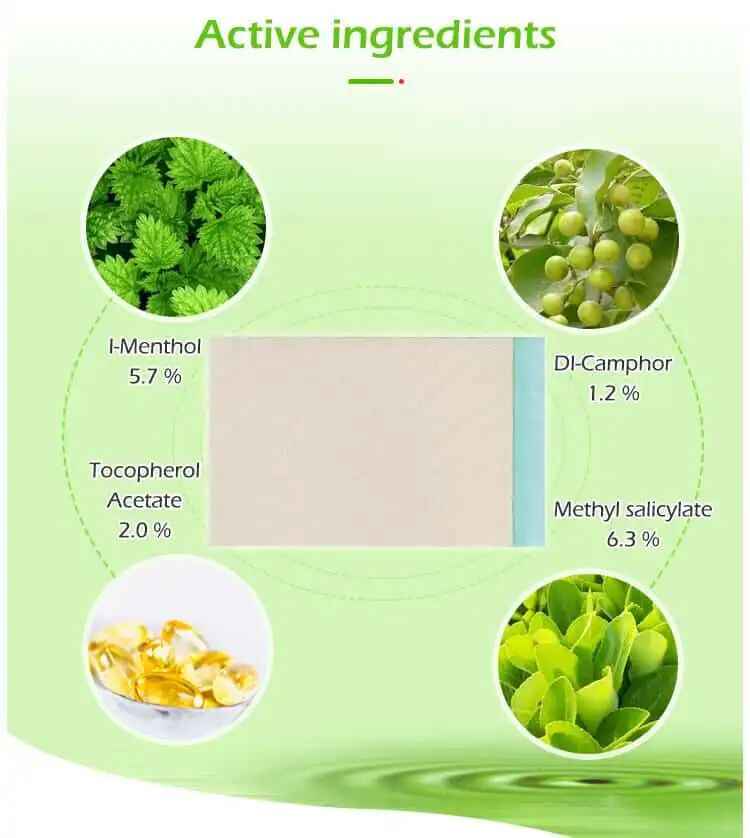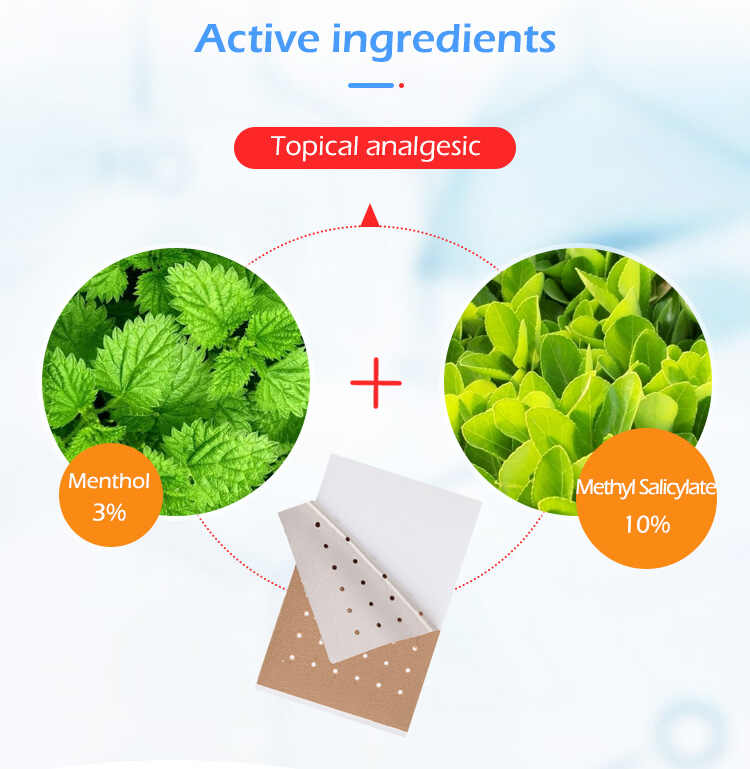How to Ensure Regulatory Compliance with Inflammation Relief Patches OEM
In the growing wellness and medical device industry, Inflammation Relief Patches OEM services are becoming increasingly sought-after. However, for brands entering this sector or expanding their product line, regulatory compliance is one of the most critical components that determine long-term success.
Whether you're planning to work with an Inflammation Relief Patches Manufacturer, customize your formulation through Custom Inflammation Relief Patches, or launch Private Label Inflammation Relief Patches, understanding and ensuring compliance with regional and international regulations is essential.
This comprehensive guide explains how to ensure regulatory compliance when partnering with an Inflammation Relief Patches OEM, and why doing so protects your brand, ensures customer safety, and strengthens your credibility in the market.

Why Regulatory Compliance Matters in Inflammation Relief Patches OEM
1. Legal Protection and Brand Security
Non-compliance can lead to severe penalties, product recalls, and reputational damage. Ensuring your Private Label Inflammation Relief Patches meet legal standards protects your business from legal risks and regulatory backlash.
2. Consumer Safety and Product Integrity
Consumers rely on Inflammation Relief Patches to relieve discomfort and inflammation. Ensuring compliance with safety standards guarantees that your Custom Inflammation Relief Patches are effective and safe, enhancing brand trust.
3. Global Market Access
If you plan to export your Private Label Inflammation Relief Patches, compliance with FDA (U.S.), CE (Europe), and other international standards is non-negotiable. Regulatory alignment broadens your reach and opens access to global markets.
Key Regulations for Inflammation Relief Patches OEM Compliance
To ensure your Inflammation Relief Patches OEM operations are compliant, you must understand the regulations that govern product safety, labeling, claims, and manufacturing practices.
1. U.S. FDA Compliance (21 CFR Part 820)
For products sold in the United States, Inflammation Relief Patches Manufacturers must comply with FDA's Quality System Regulation (QSR). This includes:
Good Manufacturing Practice (GMP)
Labeling accuracy (21 CFR Part 801)
Medical Device Reporting (MDR)
Premarket Notification [510(k)] if applicable
2. EU CE Marking (MDR 2017/745)
In Europe, Inflammation Relief Patches are typically classified as medical devices. You must:
Perform a conformity assessment
Compile a technical file
Conduct a clinical evaluation
Affix the CE marking
3. ISO 13485 Certification
OEM partners should ideally hold ISO 13485 certification. This ensures a quality management system specifically tailored to medical device manufacturing, which includes Custom Inflammation Relief Patches.
4. Other Regional Regulations
Health Canada – Medical Devices Regulations (SOR/98-282)
TGA (Australia) – Therapeutic Goods Administration
NMPA (China) – National Medical Products Administration
Always verify that your Inflammation Relief Patches Supplier understands and complies with the destination market's regulations.
Steps to Ensure Regulatory Compliance with Your OEM Partner
Step 1: Choose a Certified and Experienced OEM Partner
The foundation of compliance begins with selecting a reputable Inflammation Relief Patches Manufacturer that has a proven track record with:
FDA registration
ISO 13485 certification
CE marking experience
Strong internal Quality Assurance (QA) and Regulatory Affairs (RA) teams
Your partner’s knowledge and infrastructure can make or break your compliance.
Step 2: Conduct Thorough Documentation Reviews
Before signing with an Inflammation Relief Patches OEM, request and review:
Product dossiers and test results
Material Safety Data Sheets (MSDS)
Stability and biocompatibility test reports
Certificates of Analysis (CoA)
This ensures that the ingredients used in Custom Inflammation Relief Patches are safe, effective, and meet regulatory standards.
Step 3: Collaborate on Accurate Product Labeling
Mislabeling is one of the top reasons for regulatory penalties. Ensure your Private Label Inflammation Relief Patches include:
Correct product claims (no unverified medical promises)
Ingredient list with INCI names
Usage instructions and warnings
Manufacturer and distributor information
Ensure all languages and formatting match the destination country's regulations.
Step 4: Validate Product Claims Scientifically
Regulators scrutinize claims such as “reduces inflammation,” “pain relief,” or “clinical strength.” Work with your Inflammation Relief Patches Supplier to validate claims through:
Clinical studies
Dermatological testing
User trials
Consumer feedback analytics
Never make unsubstantiated claims, especially on Private Label Inflammation Relief Patches.
Step 5: Verify Supply Chain Transparency
Supply chain traceability is increasingly critical. Your Inflammation Relief Patches Manufacturer should provide:
Lot numbers and traceability reports
Raw material certificates
Manufacturing batch records
Storage and transportation protocols
This documentation is crucial for recalls, audits, and inspections.
Step 6: Conduct Routine Audits and Quality Checks
Maintaining regulatory compliance is not a one-time process. Brands should periodically audit their Inflammation Relief Patches OEM by:
Scheduling on-site or virtual inspections
Reviewing Quality Management System (QMS) documentation
Ensuring CAPA (Corrective and Preventive Action) procedures are in place
Monitoring complaint logs and trend analysis
Common Compliance Pitfalls to Avoid
❌ Using Non-Compliant Ingredients
Some essential oils, analgesics, or synthetic compounds may be banned or restricted in certain countries. Work with your Custom Inflammation Relief Patches OEM to ensure ingredient lists align with local health authority lists.
❌ Inadequate Shelf-Life Testing
Patches need stability testing under various conditions. Lack of such data can result in product rejection or consumer harm. Ask your Inflammation Relief Patches Supplier for real-time and accelerated aging test results.
❌ Poor Label Translation or Formatting
Labeling errors, particularly in multilingual packaging, can result in customs holds or fines. Double-check translations, format requirements, and font sizes with your OEM partner.
The Role of OEM in Navigating Regulatory Compliance
Partnering with an experienced Inflammation Relief Patches OEM streamlines compliance by offering:
Built-in regulatory expertise
Access to pre-validated formulations
Legal documentation support
Pre-audited manufacturing and packaging facilities
Faster market entry with lower risk
The right Inflammation Relief Patches Manufacturer acts not only as a supplier but also as a regulatory partner, reducing the burden on your internal team.
Final Thoughts
Ensuring regulatory compliance when working with an Inflammation Relief Patches OEM is a multi-layered responsibility that affects your brand reputation, operational longevity, and consumer trust.
By selecting a reputable Inflammation Relief Patches Manufacturer, validating your Custom Inflammation Relief Patches, and staying proactive about regulations, your brand can thrive in a competitive and tightly regulated marketplace.
From formulation to packaging, labeling to documentation, working closely with your Inflammation Relief Patches Supplier is the key to a safe and compliant product launch.
Related Questions and Answers
1. What are the key certifications I should look for in an Inflammation Relief Patches Manufacturer?
Look for FDA registration, ISO 13485, CE marking capability, and GMP compliance.
2. Can a Private Label Inflammation Relief Patches OEM help with FDA approval?
Yes. A qualified OEM can help you gather required documents and conduct necessary testing for FDA submission.
3. Are Custom Inflammation Relief Patches regulated differently than generic ones?
Yes, custom formulations may require additional safety and efficacy documentation, depending on the ingredients and claims.
4. What happens if my product is found non-compliant after launch?
You may face fines, product recalls, or even lawsuits. Partnering with a compliant Inflammation Relief Patches Supplier minimizes this risk.
5. How long does it take to ensure regulatory compliance before launch?
It can take 3–12 months, depending on the destination market, product complexity, and OEM readiness.






